[ad_1]
For people who live in the constant 9-to-5 grind, the life of night-shift workers can be a mystery.
Brian Douglas, a social worker and photographer in Kitchener-Waterloo, Ont., aims to capture the atmosphere through his 5 a.m. project.
“Every day, 5 a.m. passes me by. While I am asleep, there is a world that I am completely detached from. When I begin settling in for the evening, there are countless others getting themselves ready to start their day,” he wrote in a post about his project.
“From bakers and farmers to gas station attendants and factory line workers, we live in a world that never truly sleeps. Productivity and services continue to be provided while many of us are asleep and dreaming.”
Each work in the project includes a portrait of a shift worker and a photo of the environment in which they work, often highlighting the stillness or isolation of the night world around them.
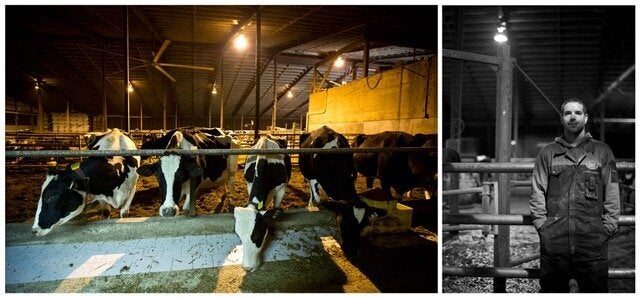
Douglas started the project in 2013, and while the pandemic has put it on hold, he hopes to continue it once it is safe again. He finds people in the Waterloo Region by contacting companies in the area and checking job boards.
He said the people he captures appreciate him for “taking the time and the interest in who they are and the work they do.”
“The night shift is a thankless position. These are hard-working people ensuring that our communities keep functioning while we are sleeping. It is hard on their minds, bodies, the lives of their families, etc. It is not easy to work the night shift,” he told HuffPost Canada in an email.
“The world truly feels different in those early hours. It is hard to put into words but there is a calm, a stillness. It is like being in another world.”
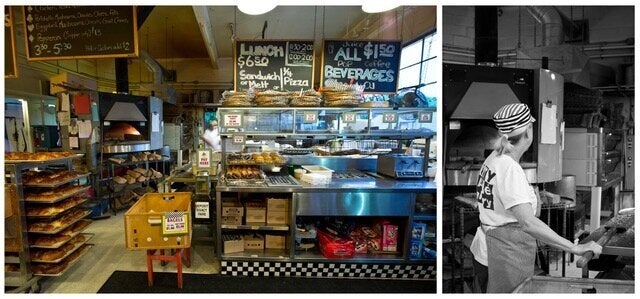
Douglas, who has been a photographer for 25 years, says he likes to focus on “work and industry” in his pictures. The 5 a.m. project emerged from a different passion project that focused on the changing industrial landscape in the Waterloo Region.
“I was photographing and documenting factory spaces that were empty, set to be demolished or were going to be renovated and turned into new spaces,” Douglas said.
“While I was in those empty spaces I spent a lot of time thinking about what they used to be and the people who occupied them. I imagined the conversations, the work, the friendships.”
Douglas said his wife was the one who suggested he combine his interest in capturing work spaces and people by highlighting night-shift workers.
He said the project gave him a new appreciation for every kind of job.
“Whether you are a firefighter or working in a factory, the work you do matters in its own unique way. Together every job — big or small — makes up the fabric of our society.”
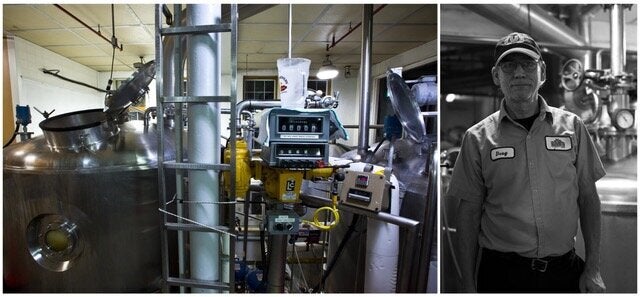
Douglas says it’s hard to pick favourites in the series, but that he really loved photographing Doug, a brewer at Brick Brewery, because the people who arranged the shoot forgot to tell Doug that he was coming.
“I showed up at 3 or 4 in the morning and no one was answering the door to let me in. I started walking around the building, found an open entrance and let myself in. I wandered around until I found Doug and when I did he looked so confused. Here is this guy he has never met with camera gear in hand in his brewery in the early hours of the morning,” Douglas said.
“Once he got over the initial ‘what’s going on right now’ moment he was such a good sport and it was a great shoot.”
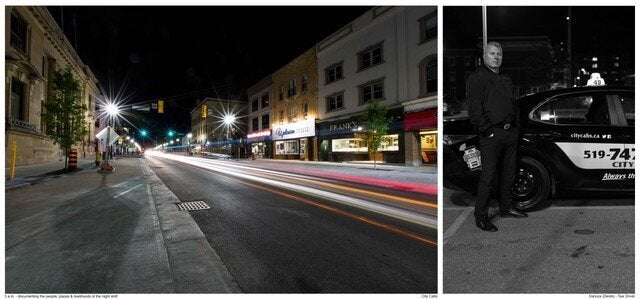
Other standout entries were Derek, a cab driver, who “could write a book with stories of people he’s had in his taxi,” and Heidi, who was the midwife for Douglas’ second child.
“In her portrait she is doing a check-up on our son and the setting shot was taken just minutes after he was born. This one holds a special place for me simply because it is such a personal photograph on so many levels.”
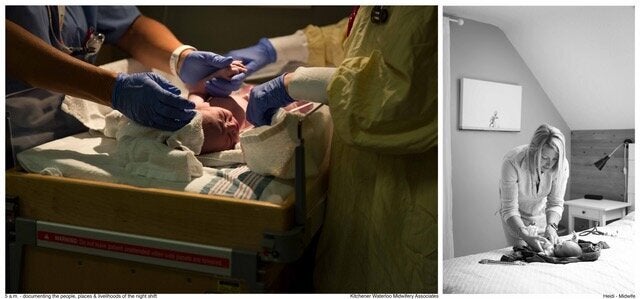
Douglas said his time with his subject varies. Sometimes he has half an hour to shoot everything he needs, while other times he can spend hours on-site and with his subjects.
He also said he was excited to get the project going again once protocols allow, especially because there are a few jobs he wants to check off his bucket list.
“I did joke with my wife though that there is one portrait that I want above all others and that I could probably, happily, move on from this project if I get it. That is the job of a worm picker! This is also a profession that I would, without hesitation, step outside of the Waterloo Region to capture!”
“So… if anyone reading this is or knows someone who is a worm picker, please reach out to me! I can already see your portrait in my mind.”
[ad_2]
Source link